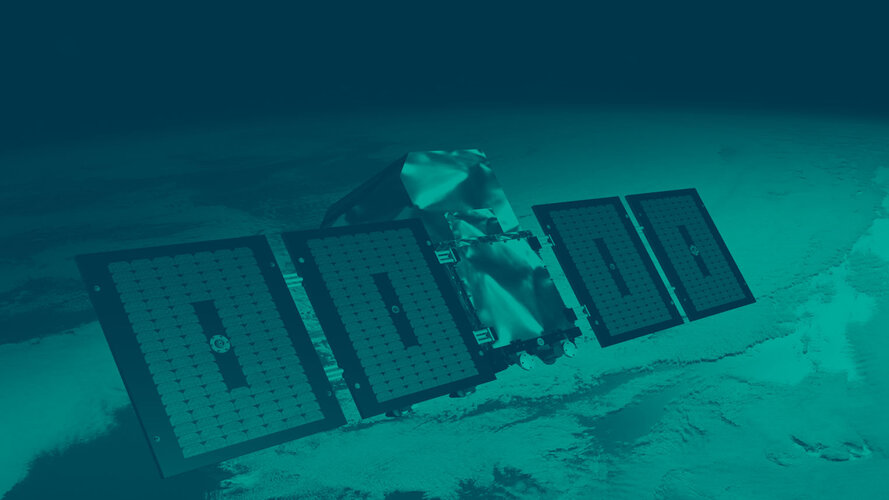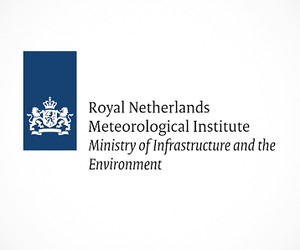How do satellites monitor the ozone layer?
The ozone layer in our upper atmosphere protects Earth from the harmful effects of ultraviolet radiation. The use of human-produced chemicals in our atmosphere used for many years depleted Earth’s ozone layer. However, the reduction in the consumption of ozone-depleting substances driven by the Montreal Protocol – an international treaty designed to protect the ozone layer – has allowed for the ozone hole to slowly recover. This global agreement demonstrates the power of international commitment and immediate global action in protecting our environment.
ESA has been involved in monitoring the ozone for over two decades. Today, 16 September, marks the International Day for the Preservation of the Ozone Layer and we take a closer look at how satellite instruments carefully monitor the ozone layer over the South Pole.
Atmospheric conditions of ozone vary naturally depending on temperature, weather, latitude and altitude. However, these natural phenomena couldn’t explain the levels of depletion observed in the mid-1970s by scientists. They discovered that certain human-made chemicals, called chlorofluorocarbons (CFCs), commonly used in fridges and aerosol cans, created extremely low ozone concentrations that appear over Antarctica from August to December each year.
Since the ban on CFCs, the ozone layer has been recovering. Projections indicate that it will have healed in the non-polar northern hemisphere by the 2030s, in the southern hemisphere by the 2050s and in the polar regions by the 2060s.
The ozone hole over the South Pole in 2022
The size of the ozone hole fluctuates on a regular basis. From August to October, the ozone hole increases in size – reaching a maximum between mid-September and mid-October.
When temperatures high up in the stratosphere start to rise in the southern hemisphere, the ozone depletion slows, the polar vortex weakens and finally breaks down, and by the end of December ozone levels usually return to normal.
In both 2020 and 2021, there were exceptionally large ozone holes over the Antarctic while in 2019, there was an extremely small ozone hole owing to unusual meteorological conditions.
Diego Loyola, from the German Aerospace Center (DLR), commented: “Total ozone measurements from the Copernicus Sentinel-5P satellite produced by DLR, show that this year’s ozone hole opened during mid-August and shows a similar extension – around 23 million sq km in mid-September – as during the years 2020 and 2021.”


Access the video
Satellite observations of the total ozone column – the total thickness of the ozone layer – have been at the core of ozone layer monitoring, dating back to 1979 for providing daily observations on a global scale.
However, the total ozone column does not provide information about how ozone varies with height. The latter is important as how and at what altitude ozone depletion takes place, and where first signs of recovery are expected. Also, where climate affects stratospheric ozone, depends on altitude.
There are various techniques to observe how ozone changes with altitude. Downward looking satellites and their instruments– particularly those measuring reflected visible and ultraviolet solar radiation such as SCIAMACHY, OMI, GOME-2 and Copernicus Sentinel-5P’s Tropomi – also allow for deriving the vertical distribution of ozone for daily monitoring of the Antarctic ozone hole.
New images from the Royal Netherlands Meteorological Institute (KNMI) show the vertical distribution of ozone in a cross-section through the circumpolar vortex (wind fields) that creates a natural border between areas with high ozone concentrations and the ozone hole over the South Pole.
This is the first time that Tropomi ozone profile measurements have been used for the monitoring of the ozone hole over the South Pole.

Pepijn Veefkind, Senior Scientist at KNMI, commented, “In the short ultraviolet wavelengths, the light that Tropomi measures is backscattered by the upper layers of the atmosphere. With increasing wavelengths, more and more of the measured light is backscattered by lower layers of the atmosphere. This allows us to derive the ozone profile with a vertical resolution of approximately 6-10 km.”
These type of satellite observations will likely remain available throughout the 21st century. The European Copernicus satellite programme – and in particular its Sentinel-4 and -5 satellite missions –are already planned beyond the year 2040 and will continue the task of monitoring the atmosphere.
Satellites can also scan the atmosphere by looking from the side which are known as ‘limb’ observations. The advantage of such observations is that their vertical layering is rather detailed. However, the disadvantage is that they do not provide the full global overview. Furthermore, many of these limb satellites are aged or aging, and many of them will not be replaced.
Claus Zehner, Sentinel-5P, Altius and Flex Missions Manager, commented, “The upcoming Atmospheric Limb Tracker for Investigation of the Upcoming Stratosphere, otherwise known as Altius, mission will fill a very important gap in the continuation of ‘limb’ measurements for atmospheric science – providing higher vertically resolved ozone profile spatial resolution and better insight in ozone trend monitoring.”

The mission carries a high-resolution spectral imager and will deliver profiles of ozone and other trace gases in the upper atmosphere to support services such as weather forecasting, and to monitor long-term ozone trends at different altitudes.
Altius is scheduled to be launched in 2025 on a Vega-C rocket from Europe’s Spaceport in Kourou, French Guiana.
Read more about the mission here: Altius.
Copernicus Service on ozone monitoring
The Copernicus Atmosphere Monitoring Service (CAMS), operated by the European Centre for Medium-Range Weather Forecasts (ECMWF) provides a variety of data to monitor the ozone hole and predict how it will change in the future.
CAMS combines measurements from satellite instruments, including Sentinel-5P, and in situ sensors with its numerical models to provide quality information about the state of the ozone layer, as well as forecasts of the status of the ozone hole.
The status of the currently ongoing ozone hole is displayed below as a 3D rendered animation.


Access the video














